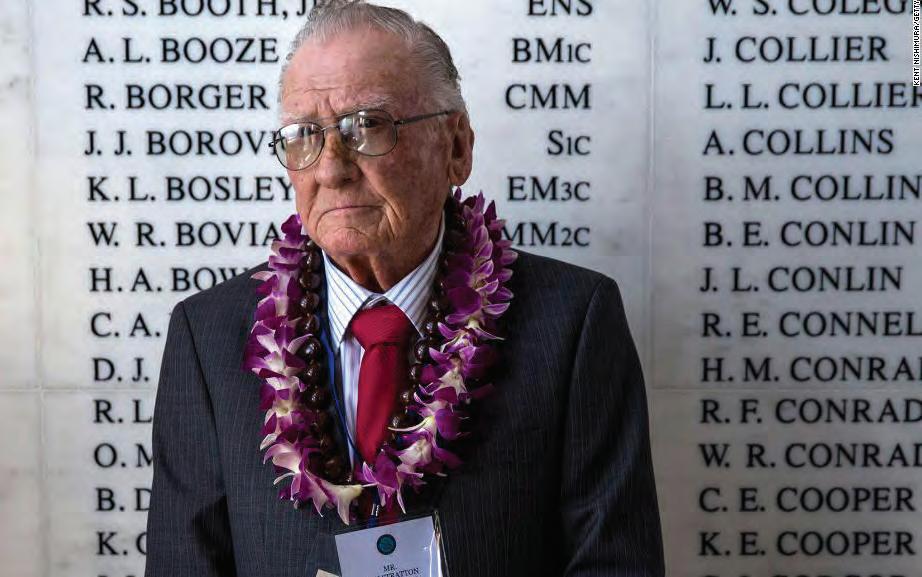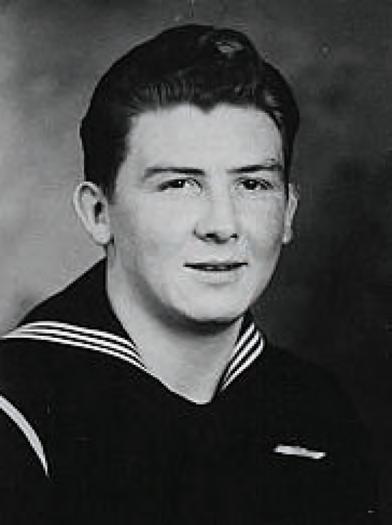
5 minute read
A Witness to History, Jimmy Lee R emembered
A Witness to History
B y : J e n n i f e r S a g o n - T a e z a , E d u c a t i o n S p e c i a l i s t , P a c i f i c H i s t o r i c P a r k s a n d A m y O g a s a w a r a , E d u c a t i o n a n d Volunteer Program Coordinator, Pacific Historic Parks
Advertisement
He was born on the shores of Pearl Harbor and would play on the train tracks near his family’s farm near Ford Island. On December 7, 1941, when he was 11 years old, James Hoy Sau Lee, known to family and friends as Jimmy, saw planes fly over his home. He ran to those train tracks.
The military would practice often, but that hardly ever happened on a Sunday. When the explosions began, he wondered, could it be a movie.
It didn’t take long to realize that something wasn’t right. He ran back home. His father grabbed him and the family ran up to the mountains. Jimmy’s father told him they were under attack by the Japanese and they needed to hide.
Life on the farm would never be the same. Jimmy Lee had just become a witness to history.
Growing up in the wartime years, Jimmy experienced what it was like to follow strict Martial Law rules, such as abiding by curfews times, lights out and rationing.
After attending Aiea Elementary School and graduating from Iolani School, he began a 42- year federal career that including serving in the Army Reserve.
Jimmy spent his retirement years sharing his stories with visitors and students from around the world as a volunteer with the National Park Service and Pacific Historic Parks.
He believed this was a way to educate youth about the attack on Pearl Harbor in hopes that our history would live on for future generations. Students and educators appreciated his willingness to openly share his experience, his fears, and his hopes. He encouraged students to see the good in their peers, be thankful for their family and to instill peace, love and forgiveness in the world.
We were fortunate Jimmy volunteered to visit schools and educate all ages at the Pearl Harbor National Memorial, near his birthplace and the scene of the fateful day World War II began. He exemplified the true meaning of education.
Rendezvous A Pearl Harbor Survivor’s Story, Donald G Stratton WITH HISTORY


Achild of the Great Depression, Donald G. Stratton was born in 1922 in Inavale, Nebraska. Prior to joining the US Navy, Mr. Stratton had never seen the ocean. After bootcamp, he was sent aboard the USS Arizona while she was still in dry dock in Bremerton, Washington in the latter part of 1940, where she was being modernized. Stratton was onboard the USS Arizona during the attacks on Pearl Harbor. Here is an excerpt from his account of December 7 th , 1941: “...Well, it was when we seen the planes over Ford Island. I still think it, to me, in my mind, that there was a water tower on Ford Island that they bombed, and I seen it go over. And I knew it was no drill. And then, when we seen the planes, then I could see the rising sun or whatever. And I was a site setter in the port anti-aircraft director, which was one deck above the bridge, as you know. And they had a hatch on the side, on the outboard side, and a hatch on the overheard, where I could stick my head up and look down the guns and see. I was setting sights and as you know, they go by on a dial and you set a bug there and then it transfers to the gun, and they match it up and then they put it on automatic. So this was all going on and we were looking… And we were firing at ‘em. … It was just --- happened just so quick… when the planes come in but see, we – when the planes come in over us, then they come from Aiea landing and drop them torpedoes toward the Battleship Row and then they had the dive bombers. And then they had some horizontal bombers up. We couldn’t even reach ‘em with our anti-aircraft… I could see they were strafing us and everything else. I could see the gun bursts. I seen the Nevada get hit. I seen the West Virginia get hit. I seen the Oklahoma capsize. All from up there [gun director] … A sailor was on topside of the Vestal, which she was tied up her bow to our stern. And we pulled across the heavier line, she threw the heaving line over, we pulled across the heavier line over, we pulled across the heavier line and we tied it off on the Arizona and crawled hand over hand across to them…” Mr. Stratton was medically discharged shortly after healing from his wounds from the attacks. About a year later, he re-enlisted through the draft and was sent to boot camp for a second time. He caught the USS Stack (DD406) destroyer out of Treasure Island and fought in the Pacific War in 1944-45. Mr. Stratton passed away February 15, 2020, in Colorado Springs at the age of 97. He was buried with honors in his hometown of Red Cloud, Nebraska. With his passing, there are only two remaining survivors of the USS Arizona. If you know someone who would be interested in sharing their Pacific War or Homefront story to be preserved in our Oral History Collection, please contact us at info@ pacifichistoricparks.org. To see Stratton’s full oral history and others like it, visit our digital collection at www.pacifichistoricparks.org B y : J o h a n n a F u l l e r , R e s o u r c e S p e c i a l i s t , P a c i f i c H i s t o r i c P a r k s







